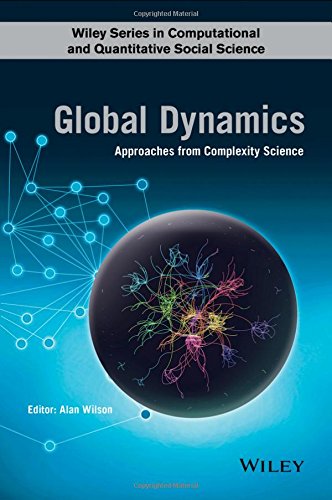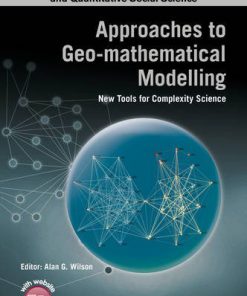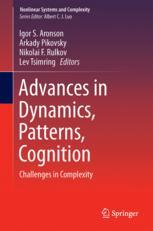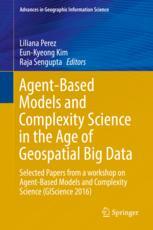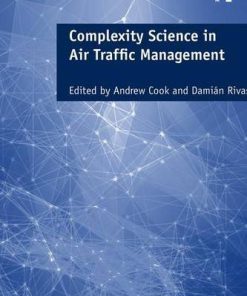Global Dynamics Approaches from Complexity Science 1st Edition by Alan Wilson 111892228X 9781118922286
$50.00 Original price was: $50.00.$25.00Current price is: $25.00.
Global Dynamics Approaches from Complexity Science 1st Edition by Alan Wilson – Ebook PDF Instant Download/Delivery:111892228X,9781118922286
Full download Global Dynamics Approaches from Complexity Science 1st Edition after payment
Product details:
ISBN 10:111892228X
ISBN 13: 9781118922286
Author:Alan Wilson
A world model: economies, trade, migration, security and development aid.
This bookprovides the analytical capability to understand and explore the dynamics of globalisation. It is anchored in economic input-output models of over 200 countries and their relationships through trade, migration, security and development aid. The tools of complexity science are brought to bear and mathematical and computer models are developed both for the elements and for an integrated whole. Models are developed at a variety of scales ranging from the global and international trade through a European model of inter-sub-regional migration to piracy in the Gulf and the London riots of 2011. The models embrace the changing technology of international shipping, the impacts of migration on economic development along with changing patterns of military expenditure and development aid. A unique contribution is the level of spatial disaggregation which presents each of 200+ countries and their mutual interdependencies – along with some finer scale analyses of cities and regions. This is the first global model which offers this depth of detail with fully work-out models, these provide tools for policy making at national, European and global scales.
Global dynamics:
- Presents in depth models of global dynamics.
- Provides a world economic model of 200+ countries and their interactions through trade, migration, security and development aid.
- Provides pointers to the deployment of analytical capability through modelling in policy development.
- Features a variety of models that constitute a formidable toolkit for analysis and policy development.
- Offers a demonstration of the practicalities of complexity science concepts.
This book is for practitioners and policy analysts as well as those interested in mathematical model building and complexity science as well as advanced undergraduate and postgraduate level students.
Global Dynamics Approaches from Complexity Science 1st Table of contents:
Part One: Global Dynamics and the Tools of Complexity Science
Chapter 1: Global Dynamics and the Tools of Complexity Science
Reference
Part Two: Trade and Economic Development
Chapter 2: The Global Trade System and Its Evolution
2.1 The Evolution of the Shipping and Ports’ System
2.2 Analyses of the Cargo Ship Network
2.3 A Complex Adaptive Systems (CASs) Perspective
2.4 Conclusions: The Benefits of a Systems Perspective
References
Appendix
A.1 Complexity Science and Complex Adaptive Systems: Key Characteristics
Chapter 3: An Interdependent Multi-layer Model for Trade
3.1 Introduction
3.2 The Interdependent Multi-layer Model: Vertical Integration
3.3 Model Layers
3.4 The Workings of the Model
3.5 Model Calibration
3.6 Result 1: Steady State
3.7 Result 2: Estimation and Propagation of Shocks in the IMM
3.8 Discussion and Conclusions
References
Chapter 4: A Global Inter-country Economic Model Based on Linked Input–Output Models
4.1 Introduction
4.2 Existing Global Economic Models
4.3 Description of the Model
4.4 Solving the Model
4.5 Analysis
4.6 Conclusions
Acknowledgements
References
Appendix
A.1 Modelling the ‘Rest of the World’
A.2 Services Trade Data
Part Three: Migration
Chapter 5: Global Migration Modelling: A Review of Key Policy Needs and Research Centres
5.1 Introduction
5.2 Policy and Migration Research
5.3 Conclusion
References
Appendix
A.1 United Kingdom
A.2 Rest of Europe
A.3 Rest of the World
Chapter 6: Estimating Inter-regional Migration in Europe
6.1 Introduction
6.2 The Spatial System and the Modelling Challenge
6.3 Biproportional Fitting Modelling Methodology
6.4 Model Parameter Calibration
6.5 Model Experiments
6.6 Results
6.7 Conclusions and Comments on the New Framework for Estimating Inter-regional, Inter-country Migration Flows in Europe
References
Chapter 7: Estimating an Annual Time Series of Global Migration Flows – An Alternative Methodology for Using Migrant Stock Data
7.1 Introduction
7.2 Methodology
7.3 Results and Validation
7.4 Discussion
7.5 Conclusions
References
Part Four: Security
Chapter 8: Conflict Modelling: Spatial Interaction as Threat
8.1 Introduction
8.2 Conflict Intensity: Space–Time Patterning of Events
8.3 Understanding Conflict Onset: Simulation-based Models
8.4 Forecasting Global Conflict Hotspots
8.5 A Spatial Model of Threat
8.6 Discussion: The Use of a Spatial Threat Measure in Models of Conflict
References
Chapter 9: Riots
9.1 Introduction
9.2 The 2011 Riots in London
9.3 Data-Driven Modelling of Riot Diffusion
9.4 Statistical Modelling of Target Choice
9.5 A Generative Model of the Riots
9.6 Discussion
References
Chapter 10: Rebellions
10.1 Introduction
10.2 Data
10.3 Hawkes model
10.4 Results
10.5 Discussion
References
Chapter 11: Spatial Interaction as Threat: Modelling Maritime Piracy
11.1 The Model
11.2 The Test Case
11.3 Uses of the Model
Reference
Appendix
A.1 Volume Field of Type Ship
A.2 Volume Field of Naval Units
A.3 Pirates Ports and Mother Ships
Chapter 12: Space–Time Modelling of Insurgency and Counterinsurgency in Iraq
12.1 Introduction
12.2 Counterinsurgency in Iraq
12.3 Counterinsurgency Data
12.4 Diagnoses of Space, Time and Space–Time Distributions
12.5 Concluding Comments
References
Chapter 13: International Information Flows, Government Response and the Contagion of Ethnic Conflict
13.1 Introduction
13.2 Global Information Flows
13.3 The Effect of Information Flows on Armed Civil Conflict
13.4 The Effect of Information Flows on Government Repression
13.5 Conclusion
References
Appendix
Part Five: Aid and Development
Chapter 14: International Development Aid: A Complex System
14.1 Introduction: A Complex Systems’ Perspective
14.2 The International Development Aid System: Definitions
14.3 Features of International Development Aid as a Complex System
14.4 Complexity and Approaches to Research
14.5 The Assessment of the Effectiveness of International Development Aid
14.6 Relationships and Interactions
14.7 Conclusions
References
Chapter 15: Model Building for the Complex System of International Development Aid
15.1 Introduction
15.2 Data Collection
15.3 Model Building
15.4 Discussion and Future Work
References
Chapter 16: Aid Allocation: A Complex Perspective
16.1 Aid Allocation Networks
16.2 Quantifying Aid via a Mathematical Model
16.3 Application of the Model
16.4 Remarks
Acknowledgements
References
Appendix
A.1 Common Functional Definitions
Part Six: Global Dynamics: An Integrated Model and Policy Challenges
Chapter 17: An Integrated Model
17.1 Introduction
17.2 Adding Migration
17.3 Adding Aid
17.4 Adding Security
17.5 Concluding Comments
People also search for Global Dynamics Approaches from Complexity Science 1st:
global politics applying theory to a complex world pdf
complexity science pdf
global asymptotic stability
complexity theory and the social sciences
global systems dynamics stock
Tags:
Alan Wilson,Dynamics,Approaches,Complexity
You may also like…
Business & Economics
Politics & Philosophy
Computers - Computer Science
Advances in Dynamics Patterns Cognition Challenges in Complexity 1st Edition Igor S. Aranson
Computers - Programming
Technique - Transport
Politics & Philosophy
Hobbies & Games
History - European History


